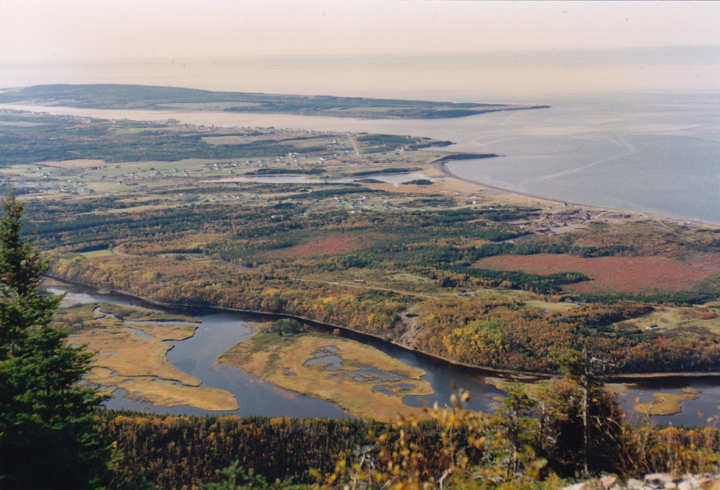
This blog post was published in May 2014.
—-
Raised With Radio and Rock n’ Roll
Growing up in Cleveland, Ohio, a Great Lakes native, I began developing an affinity for Canada before I was ten years old. First, there was the geography: crossing Lake Erie from northeast Ohio to southwestern Ontario as a bird flies is only about a 40-mile span at its narrowest point. This proximity promoted my first cultural interest in Canada: excellent reception of AM radio stations such as CKLW from Windsor, Ontario, a Top 40 hit-making powerhouse just across the Detroit River from the Motor City***. They played lots of Motown, and a ton of other new music. I could sometimes tune it in even in the daytime, while after dark its 50,000 watts wafted even easily across the lake, practically turning it into a local outlet. I liked to lay in bed listening through a single earphone (the only kind then), enjoying the latest songs and the patter of entertaining deejays, which sometimes included word games and music trivia.
I had been enjoying rock n’ roll from the moment the Beatles landed in the States, when I was seven or eight. I had two older siblings, doubtless adding to my early interest in pop music. Cleveland was a hotbed of rock n’ roll, and the wider pop and rock explosion happened all around us. In 1967, when I was thirteen, I went to my first live rock show: Cream, with Canned Heat opening for them. Later, I went to live shows with the Grateful Dead, and the New Riders of the Purple Sage; Traffic; John Mayall; Neil Young; the Allman Brothers; and The Band, among many other acts. Local radio, and whatever distant signals I could pick up on my trusty transistor brought music, and many, many bands in to my life.
With Windsor seeping in to my awareness from the west, the rest of Ontario was accessible to the east and north, barely more than a 3-hour drive away for family vacations. Meantime, I already had set my eye further east, on Montreal.
On the Road to Montreal
The summer before I turned thirteen, I was studying Hebrew and preparing for my Bar Mitzvah that coming September. Taking note of the hard work I was putting in, my parents offered to take a summer road trip to a destination of my choice. It would be just the three of us, with my brother and sister staying with grandparents in Toledo. I told my dad, Earl, and mom, Sylvia, that my choice was Montreal, where the World’s Fair, Expo ’67, was being held that summer, only a two-day drive away. In upstate New York, we toured Fort Ticonderoga, erected in 1755, a key point in the epic struggle for control of the continent between Britain and France (a tug-of-war that ultimately produced the United States and bilingual Canada). My dad took this picture of me at the fort. We also saw the still-standing colonial barracks at Chimney Point, on the NY side of Lake Champlain, near a small car ferry that crossed into Vermont several times each hour.
We stopped at Fort Ticonderoga, where in the 1770s, the twinned fate of the two countries, America and Canada, was set.
After an overnight stay in Burlington, VT, we crossed the border and I was in Canada for the first time. My dad, who always liked listening to the radio on road trips, suggested I twirl the tuning knob and see what stations we could pull in. I found a local outlet of what we heard ID’d as “the CBC.” It had to have been a new concept to us—this was years before NPR, but the sound of a national network wasn’t alien to us, either. We heard Canadian and international news on the hour, broadcast from some central hub, mixed with local updates. It must have been a while till we specifically noticed the absence of commercials—maybe that’s why we found it both relaxing and stimulating to listen as the miles rolled by. Along with news, we heard many different kinds of programs: interviews with experts, interesting characters, authors, music, comedy, skits, and diverting features, mostly on Canada, but also touching global topics, including science, international relations, books, art, and culture. CBC immediately made Canada seem an interesting place, providing context to view the people, the varied buildings, and the stunning landscapes. Once we reached Montreal, I marveled at the many geodesic domes dotting the cityscape, with Buckminster Fuller’s innovative designs making a big splash at the Expo. I enjoyed listening to the spoken French we heard around our motel. While the cityscape clearly resembled Cleveland’s—under-sized skyscrapers and low-rise commercial buildings mixed with distinctive residential architecture—it was also different from home.
Back in Cleveland, I began to see how far short of its noble pledges and promises my own country can fall, and so participated in anti-Vietnam War demonstrations and joined marches advocating civil rights and equality for all Americans. Commemorating our many leaders who’d been assassinated, including Malcolm X, friends and I donned black armbands and wore them in school. Later, practicing with the middle school football team for which I was returning kickoffs and punts, I learned that puerile behavior was not limited to kids, as I heard my coach, a science teacher named Mr. Alt whom I also had for class, scream at me, “Watch out for flying black armbands.” It was a bit distracting while I tried fielding the long, high kicks, and I soon decided to give the football team a pass. Perhaps this is when disaffection with my own country first took root, leaving me eager to adopt another country that might embody some of the ideals I found trampled upon at home. This is probably when the seeds of a bi-national identity for reasons of cultural alienation from the US first took root in me.
A few summers after the trip to Montreal, before I turned seventeen, my brother Joel was living in Olympia, Washington, attending Evergreen State College. After a visit with Joel and our black Labrador Noah, he drove me to Aberdeen, WA where I boarded a light plane. Seated next to the pilot as his only passenger on the flight, we glided quietly past the massive bulk of a mauve Mt. Rainier, then over the border to Vancouver, British Columbia, where I stayed one night in the Skid Row neighborhood near the railroad station, with lots of drunk men outside my hotel. The next morning I boarded a Canadian National train for several days’ journey across the Canadian Rockies and the vast Laurentian Shield, then on to Toronto, where I met my parents who had driven to meet me there for a few days’ stay.
Opening a Bookstore, Selling Books by Canadian Authors
In 1978, after graduation from Franconia College—an experimental institution located in the White Mountains of New Hampshire, about 2 1/2 hours from the eastern townships of Quebec—I began operating Undercover Books in Cleveland with the whole family (Joel, Sylvia, Earl, and sister Pam). We opened just as a new generation of Canadian authors was bursting in to print, and I took an instant liking to Canadian literature. As the store’s lead buyer for adult books, I worked on ordering Canadian titles despite trade barriers that made importing them difficult at the time. Fortunately, there were ways to work around the barriers, like ordering from Seal Books, an imprint of Bantam Books’ Canadian division, whose titles resided in an easy-to-overlook, supposedly off-limits to me corner of the Bantam order form. Our sales rep told me I shouldn’t bother ordering any Seal Books, but I penciled in some quantities anyway, and they were shipped! I quickly realized Seal was a terrific source for Can-lit. Penguin was also great for Canadian authors, as can be seen in many of the covers I’m sharing below. We began introducing our customers to books by Margaret Atwood, Mordecai Richler, Morley Callahan, Margaret Laurence, Marian Engel, Guy Vanderhaeghe, Morley Torgov, Timothy Findley, Farley Mowat, Pierre Berton, the longtime CBC broadcaster Patrick Watson, who visited our store to launch his 1979 suspense novel, Alter Ego, and Robertson Davies. In the early 1980s, we were routinely ordering Davies’ Deptford Trilogy (Fifth Business, Manticore, World of Wonders) by the carton, stacking up the paperbacks and selling them in large quantities. In my enthusiasm, I wrote Davies a letter c/o of Penguin to let him know and introduce myself and tell him about our stores. He responded from Massey College in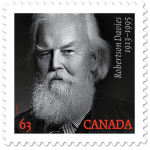
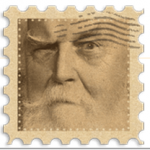 Toronto where he was Master, and a pleasant correspondence between us ensued, from which I’m glad I can reproduce his letters to me below. I recently wrote about Davies when Canada Post marked the 100th anniversary of his birth with a new stamp, an image that I adapted into a graphic for this website. Here are pictures of some of the Canadian paperbacks we sold in our three Cleveland bookstores.
Toronto where he was Master, and a pleasant correspondence between us ensued, from which I’m glad I can reproduce his letters to me below. I recently wrote about Davies when Canada Post marked the 100th anniversary of his birth with a new stamp, an image that I adapted into a graphic for this website. Here are pictures of some of the Canadian paperbacks we sold in our three Cleveland bookstores.
- Undercover Books used to order&sell Robertson Davies’ The Deptford Trilogy (top row) by the carton.
- Farley Mowat is one of the Canadian writers whose books I sold, then later got to publish.
- Richler was another writer I later got to publish, after earlier selling his books in my store.
- Irish-Canadian novelist Brian Moore wrote books whose protagonists are often enduring an existential crisis.
- “The Stone Angel” is a brilliant novel, with an ingenious structure, w/two related narratives meeting at the end.
- Patrick Watson, A.M. Klein, Morley Torgov, Marian Engel, Pierre Berton, Guy Vanderhaeghe
And here are the letters I received from Robertson Davies in 1980-81. If you wish, you may hit the pause button in the blog’s slideshow to make time for reading the letters.
- This 1st letter from Robertson Davies was in reply to a letter I had sent him after reading & selling the Deptford Trilogy.
- In Fifth Business, the protagonist is a magician who performs in London.
- At this time, the play and movie “The Elephant Man,” and nonfiction books about him, Joseph Merrick, were in the news.
- I had sent Davies a copy of a book Undercover Books was selling about Joseph Merrick, aka the Elephant Man.
- In the year after letter #3, I had written a letter to fellow booksellers about Davies’ work, urging them to take the lead of Undercover Books and energetically sell his books.
- Seven years later, by then an editor at Macmillan, I had written Davies and asked about republishing his book of essays, A Voice from the Attic.
Over my seven years in the bookstore, from 1978-85, we introduced thousands of readers to books by Canadian authors. Our customers enjoyed them enormously and never seemed to balk at their Canadian-ness or find their settings off-putting or unfamiliar. I began to see the literary world of the American Midwest and Canada’s southern tier (and one might argue, the whole of the Pacific Northwest on both sides of the border) as contiguous literary cultures, different from but not really all that foreign one from the other.
Questing for Canadian Landscapes and Meeting Canadian Families
Moving to New York City in 1985 to get started in publishing, I now found Canada’s east coast within easy reach for road trips. Journeying solo, I made three long excursions in my Renault station wagon, relishing Canadian landscapes and the chance to listen to CBC radio for weeks at a time. I enjoyed making ferry crossings whenever I could use them for exciting marine passages. I ferried from Portland, Maine, to Yarmouth, Nova Scotia, and traversed the whole province, reaching Cape Breton Island where I drove the Cabot Trail (a dramatic drive that can fairly be dubbed the Big Sur of North America’s east coast), and toured the historic fortress of Louisbourg, the great Atlantic port of 1700s Franco-North America. I marveled at the scenery of Quebec’s Saguenay fjord and the nearby village of Tadoussac, with its grand, red-shuttered, white clapboard hotel, and watched for whales there, with cetaceans feeding on the plentiful krill in the Gulf of St. Lawrence. I also discovered the Gaspé Peninsula, including the monumental Percé Roche, or ‘pierced rock,’ a picture of which has given me the visual touchstone for this blog, and which I wrote about recently. In late fall 1988, after touring Nova Scotia a second time, I ferried from Sydney, on the northeast tip of Cape Breton, across to the southern coast of Newfoundland, during that year’s last week of crossings, before harsh weather would shutter the ferry for the season. My radio diet during these trips introduced me to such engaging CBC hosts as Peter Gzowski, Barbara Budd, Vicki Gabereau, and Michael Enright, whose voices I came to know and rely upon. Alone in my car, I felt right at home with these aural companions. Their voices seemed to knit together the vast continent-wide country, from Newfoundland to British Columbia, spanning six time zones, two more than in the U.S.
Driving up Newfoundland’s indented west coast, I spent a long weekend in the small city of Corner Brook, lodging in a family-run B&B. My hosts had the surname of Brake and I recall being served and enjoying the same food they were themselves eating. There was fresh cod, boiled potatoes, and a local desert called “bakeapple,” a kind of local berry baked in a flaky crust. The family patriarch Mr. Brake had on the Friday just prior been mandatorily retired from the national railway on account of his age, casting a funereal pall over the Brake household. One afternoon he took his fiddle from its case, resined up the bow, and began playing some traditional tunes, all the while telling stories of his years working on the railroad. As the only guest in their home, in his distinctive accent Mr. Brake explained for my benefit that Newfoundland had twice by popular vote declined to join the federal dominion of Canada, only agreeing the third time, in 1949, when government ministers in Ottawa promised to build a Newfoundland leg of the Trans-Canada Highway, finally traversing the island province’s east-west bulk with a proper road. He added in sadness that for him, joining the dominion also meant that the provincial railway, for which he was already working prior to ’49, had also joined the federal system, decades later leaving him vulnerable to the age limit that had retired this vigorous man that week at just age 68 or 70.
Leaving the Brake home, I ventured further north and camped in Gros Morne National Park, a UNESCO World Heritage site whose massive granite cliff walls tower two and three thousand feet above the Western Brook Pond, a huge body of water belying its prosaic name. Think of this majestic site as the “Yosemite of Canada,” fitting as you’ll see from the pictures of it below. I really wanted to keep heading even farther north, to l’Anse aux Meadows, the place in North America where it is thought the Vikings landed, probably in the 1000s, leaving structures behind that were only discovered in the 1960s. I imagine l’Anse aux Meadows as a kind of archaeological cousin to Skara Brae, in Scotland’s Orkney Islands, a neolithic settlement from a Pictish or Viking habitation that I had visited earlier in the 1980s. But worried about possibly missing the last ferry back to the mainland of North America, I hightailed it back down Newfoundland’s west coast, catching a choppy ferry ride back to Sydney on the second last day of the season.
In 1993, by then married to my wife, the artist Kyle Gallup, we made an autumn trip to Cape Breton, her first visit to the island, my third. Near the major francophone ville of Cheticamp—hometown of the great Acadian fiddler Joseph Cormier, with whom my Franconia College pal Karl Petrovich had swapped Cape Breton reels and waltzes in the 1970s—Kyle and I spent a few nights in a hamlet called Petit Etang, in a B&B with a local host couple, Marie and Roland Doucette. Major League Baseball’s postseason was underway, and I was tickled to discover the Doucettes were ardent baseball fans. I hadn’t expected to see much of baseball’s postseason during this vacation, though the Toronto Blue Jays were competing that fall, and interest did of course extend to Atlantic Canada. The Doucettes invited me to join them in their living room to watch a Blue Jays vs Phillies World Series game. On the mantle above their hearth I saw what looked like a small shrine to Roberto Clemente, the late Pittsburgh Pirates Hall of Fame outfielder. I asked Marie about the photos and figurines. She explained that he was a hero to them, owing to the humanitarian work he had been doing when he died in a 1972 plane crash, bringing relief supplies to earthquake victims in Nicaragua. Moreover, they’d later had a visiting priest in their parish from the Caribbean, a black man they admired greatly. This broad-minded Acadian couple had extended their positive feelings about Clemente toward other people of color from the Caribbean, and to baseball.
After a few days in the Doucette household, we left their accommodation after finding a small house to rent in the nearby village of Margaree Harbour. The day we left the Doucettes, Marie kindly packed us off with spaghetti sauce and fish chowder, so we “wouldn’t have to cook the first night” in our new abode, she told us. We’d found the little house through a lucky visit we made to a local establishment called the Hungry Piper Gift Shop & Tea Room, a charming spot that offered woolens, tartan ties, Celtic music cassettes, items emblazoned with Gaelic, Cabot Trail postcards, local crafts, and light fare. We met the shop’s proprietors, the May family, a clan with whom Kyle and I became fast friends. They were John and Stephanie May, a married couple, and their grown son Geoffrey, married to Rebecca Lynne. We learned from Stephanie, a voluble storyteller, that they’d originally come from Connecticut, and moved north during the Vietnam War, lest Geoffrey be exposed to the U.S. military draft. John had held an executive position with an insurer in Hartford, and Stephanie was politically active, working for a nuclear freeze and in 1972 on the McGovern for President campaign—alongside a young Arkansan named Bill Clinton, whom a year before we met the Mays had been elected U.S. President. The Mays’ decision to move was also triggered after Stephanie discovered she’d earned a spot on President Richard Nixon’s sinister “enemies list.”
By 1993 when we met, the Mays had been thoroughly ensconced in Canada for almost twenty years. On the property with their shop was a sort of derelict schooner, rather incongruous in their parking area. Upon close inspection I saw emblazoned on the side was the name “The Happy Adventure,” the very boat that Farley Mowat wrote about in his very funny book, The Boat Who Wouldn’t Float. (It opens with the author buying the boat at an auction, going halves on it with his friend and publisher, Jack McClelland of McClelland & Stewart.) The Mays were friends with Farley, who donated the broke-down vessel in hopes it would prove a tourist attraction for them.
Stephanie and John had another child, a grown daughter named Elizabeth who was the head of the Sierra Club of Canada, living in a distant city. She owned a little house, also in Margaree Harbour, not in use, which the Mays suggested we could rent during our stay. Kyle and I took them up on it, and with a spirit of adventure undimmed by the fact the house had little heat and hot water, we loved our time there, nearly a week. I had a portable radio with me, and so got to hear the Blue Jays win the World Series, when Joe Carter hit his walk-off homer in Game 6, made indelible by his jubilant romp around the basepaths. A couple nights later Geoffrey and Rebecca Lynne invited us to their home for dinner. This happened to be the date of a Canadian federal election, October 25, 1993, and Geoffrey invited us to stick around and watch the returns with them. It turned out to be an amazing night, as in this election the federal tories were entirely swept out of power in one of the most lopsided defeats ever in the history of modern elections. It was a celebratory evening—for comparison’s sake, imagine all Republican officeholders in the U.S. losing on the same day! Our distant landlord for that week, Elizabeth May, has since become a prominent Canadian politician, leader of Canada’s Green Party, and the first Green Party member of the Canadian Parliament. All these great trips—and others made with my wife and son to Niagara-on-the-Lake, Toronto, Prince Edward Island, Vancouver, and to the Saguenay—have made majestic Canadian scenery and warm Canadian people an indelible part of my mental and emotional landscape, and I’m sharing photos from many of those trips here.
- The restored fortress of Louisbourg, on the eastern side of Cape Breton island.
- The Tadoussac Hotel is a white clapboard wonder decked in red trim, while red umbrellas dot the grounds.
- The Saguenay fjord, where the Saguenay River mingles with the Gulf of St. Lawrence.
- Picture book scenery in the Saguenay region
- Farmland, hills, river
- Storybook landscape
- Just outside the village of Tadoussac.
- Just outside the village of Tadoussac.
- At low tide the mud flats open out and provide great wading.
- Ewan leaping above the mud flats at low tide in the Saguenay region.
- In August whales vist the Tadoussac region, feeding on the plentiful krill in the water.
- Calm water and a mellow whale.
- Percé Rock, seen from a distance.
- The prow of Percé Rock juts in to the sky.
- I could approach Percé Rock at low tide but I knew I’d better not lose track of time.
- The sharp prow on the massive rock face really works its way in to your awareness, then and still many years later.
- From a small boat it was easy to really feel the texture of the rock, and the arched opening.
- Historical sources report a second arch collapsed into the water in 1845, leaving this stack on the right.
- It was excited to set the timer on my camera, then skitter behind driftwood for a selfie, 1988 version.
- The crook of a silver birch tree offered a place to rest.
- I spent two nights in this lovely motel, near the shore.
- Montmorency Falls, located just outside Quebec City, has a drop of nearly 300 feet.
- I liked the name because a favorite funny book, “Three Men in a Boat,” features a character named Montmorency.
- On a sunny day, rainbows are all around you at Montmorency Falls
- We both got wet from the spray.
- What a blast!
- A frieze honoring fisherfolk, Peggy’s Cove, Nova Scotia.
- Tent camping in Gros Morne Nat’l Park, Newfoundland.
- Penetrating deep in to these wild granite cliffs is the Western Brook Pond
- The Cabot Trail is amazing ribbon of road, the Big Sur of Canada.
- The Cabot Trail is so scenic that I drove its full length in both directions.
- Autumn was a great season to be in Cape Breton.
- I had loved Cape Breton by myself, so it was great to come back with Kyle
- It’s a gentle hike up to Benjie’s Lake, off the Cabot Trail, one of the most serene places we’d ever been.
- Shoreline near Cheticamp
- Autumn light on the Cabot Trail
- Fall is a riot of color, especially red.
- Colored roofs are common in Quebec and Cape Breton
- Red Roof Cape Breton
- The British army’s expulsion of the Acadians from Cape Breton are recalled throughout the region, here in a wall hanging.
- The Acadian flag, proudly displayed by a local parks official in Cape Breton.
- The Acadian flag on a Cape Breton barn.
- Gaelic College, St. Ann’s, Cape Breton.
- Cape Breton Pastoral, near Englishtown.
- Shafts of Hebridean light are seen frequently on Cape Breton.
- A boiling ocean, Cape Breton Island.
- Enjoying local hospitality with Geoffrey May, his wife Rebecca Lynne, and their friend.
- So much fun meeting Stephanie and John May.
- The home of Elizabeth May, which Kyle and I rented for a week during our visit to Cape Breton in the fall of 1993.
- There was very little heat in the house so we stayed in bed a lot, under acres of quilts.
- Keeping warm by firing up the stove at Elizabeth May’s house.
- St. Peter’s Church, Cheticamp.
- As a goof I clasped hands with a couple of the scarecrows.
- Joe’s Scarecrow Village is a local attraction on the road just outside Cheticamp.
- Cheticamp lobsterman
- Scatological scarecrow
- Scarecrows with messages.
- Scarecrow sawyers.
- Scarecrow Margaret Thatcher.
- A great Cheticamp fiddler, Joe Cormier. In photo #2, I attended a show in NYC w/him, and Beausoleil (Michael Doucet is 2nd from left).
- Tadoussac watercolor by Kyle Gallup
- Vancouver watercolor by Kyle Gallup
- PEI Watercolor by Kyle Gallup
- Vancouver beach
Working as an Editor, Discovering and Publishing Canadian Authors
Once established as an editor in NY publishing, I consciously broadened my efforts to introduce Canadian culture to American readers, bringing out U.S. editions of books by Atwood, Richler, Mowat, Berton, and Lt. General Romeo Dallaire, as well as Paul Quarrington, Antonine Maillet, Howard Engel, Don Akenson, Carol Bruneau, Joan Barfoot, George Elliott Clarke, Steven Galloway, Joel Thomas Hynes, Paul Anderson, Elaine Dewar, Gwynne Dyer, Julian Sher, William Marsden, Brian Fawcett, Ken McGoogan, Bonnie Buxton, Sheila Munro, Stephen Strauss, and Jan Lars Jensen, and a couple I may have forgotten. When in 1997 I brought out Berton’s Niagara: A History of the Falls, it made the cover of the NY Times Book Review, a first for one of my titles. Below is a picture of that NYTBR cover and a gallery with pictures of many of the U.S. editions of Canadian books I’ve published.
- Thurston Clarke in the NY Times Book Review: “In his entertaining & exhaustively researched book Mr. Berton recounts the bizarre, ingenious & surprising ways this natural wonder has been used–and misused, admired & corrupted…. Knitting dozens of stories…into a narrative that is skillful, engaging & packed with tragedies, oddities, obsessions & hymns of praise from literary figures.”
- “Prisoners of the North” featured 5 historical figures who were enthralled by the wild north, including John Hornby, subject of “Snow Man,” a 1931 book I republished in 1997.
- Substantial collections from two greats, Margaret Atwood and Mordecai Richler.
- It was a privilege to republish Mowat’s 1st book, “People of the Deer” (1952) and new work of his in the 2000s. When Mowat died this year he had published more than 45 books.
- Shake Hands with the Devil; Fishing with My Old Guy; The Devil is Loose.
- Memory Book; A Purple Thread for Sky; Luck
- George & Rue; Ascension; Down to the Dirt
- Hunger’s Brides; Bones; Angels of Death
- Cambodia: A Book for People Who Find Television too Slow; Fatal Passage and Ancient Mariner
- Damaged Angels; Lives of Mothers & Daughters; Nervous Sysytem
Discovering Canada’s Thriving Indie Rock Music Scene and Enjoying Toronto
In 2009 I discovered Canada’s rock music scene, which quickly became a new passion of mine. I found the music instantly likable, enjoying the music of hundreds of talented artists including such acts as Dan Mangan, Rose Cousins, Amelia Curran, Cuff the Duke, Jeremy Fisher, Imaginary Cities, Wintersleep, Chic Gamine, Gramercy Riffs, Said the Whale, Arkells, Joel Plaskett, Great Lake Swimmers, Rheostatics, Matt Mays, Mohawk Lodge, Rah Rah, Matthew Barber, Kathleen Edwards, Portico, Ohbijou, Emm Gryner, Carolyn Mark, Inlet Sound, The Weakerthans, Elephant Stone, Jill Barber, Lindi Ortega, Brian Borcherdt, The Matinee, Shred Kelly, Megan Bonnell, Mo Kenney, Plants & Animals, Rural Alberta Advantage, Del Barber, Amity Beach, Almighty Rhombus, Sloan, and Elliott BROOD, to name only forty of the many dozens of great musical acts I’ve discovered the past five years. I became a member of the informal community associated with CBC Music and CBC Radio 3, the service’s Internet radio station where I would comment regularly on the in-house blog and became friendly with dozens of fans of this music from all over North America and the world, with the station hosts, and with Canadian musicians, regularly attending their live shows at NYC venues when they come through town. With a New Jersey friend, Steve Conte, who runs FunnyBooks, a New Jersey comics store, we started #R3NYNJ, a Twitter hashtag we use to promote Canadian acts appearing in NYC. In 2011 I began attending Toronto’s annual North By Northeast Festival (NXNE), the past three years for my blogs as accredited press. At NXNE in June 2013, I heard more than 30 bands over four days, posting about the shows here, here, here, and here, and will be attending NXNE 2014, now writing for two blogs, this one, and my original site, The Great Gray Bridge. Sadly, CBC management has seen fit since I first wrote this essay to entirely sideline CBC Radio 3, which is now geo-fenced outside of Canada, and much dimmed even in Canada, a grave disappointment to all of us who still enthusiastically wave the flag of Canadian indie rock n’ roll. Here are photos I’ve taken in Toronto and at NXNE live shows over the past few years.
- Niagara Falls from a Toronto-bound flight.
- I’ve flown the commuter airline Porter Air to and from Toronto several times.
- Porter flights land at the Toronto Island airport, close to downtown.
- The splendid view from my room at the Alexandra Hotel on Ryerson Ave., with the CN Tower in the distance.
- It’s great to have press credentials conferred on me by NXNE for my blogging.
- NXNE guides, 2011-13
- NXNE features daytime live music on outdoor patios, as much fun as a day ballgame; this was a show with the band Slow Down Molasses in 2011.
- Brian Borcherdt, formerly of Holy Fuck, playing solo during NXNE 2011 at a community hall on Bathurst St.
- Cathleen Hagan w/Steph Ramsahai and other Radio 3 fans enjoying Slow Down Molasses
- Playing at Sneaky Dee’s in 2011 Gramercy Riffs of St. John’s, NL, played a song of theirs I love, “Dreaming,” and after I asked them to play it, dedicated their performance of it to me, a sweet surprise.
- Carolyn Mark played a great show at the intimate Dakota Tavern, one of my fave venues, where I’ve seen many memorable live shows.
- Carolyn Mark had a terrific band with her–Jimmy Wright on guitar and Jenny Whiteley on bass.
- Mohawk Lodge played at the Dakota Tavern right after Carolyn Mark.
- My fave song by the Mohawk Lodge is the epic “Cold Hearts.”
- Great showman Jeremy Fisher, whistling during his 2012 performance at the Dakota Tavern.
- In front of the Dakota Tavern stage there’s just enough room for dancing. Christine Macavoy (flowered dress) and Grant Lawrence (green t-shirt) are enjoying themselves.
- Rah Rah from Regina, Saskatchewan is a great live band. At this 2012 Dakota Tavern show they debuted songs from their album “The Poet’s Dead.”
- Even with sitar in the sonic mix, Elephant Stone have a bright, pop sound tinged with psychedelia. They sounded great in the cozy confines of the Dakota Tavern.
- Imaginary Cities was a discovery I made at NXNE 2011. Pictured here: Marti Sabit, lead singer at the Rivoli.
- Discovery of new bands is one of the best things about NXNE, a pleasure fulfilled when I heard Almighty Rhombus in 2013.
- For NXNE 2013 Brian Borcherdt was playing in a duo, Dusted.
- Cameron House is a relaxed venue on Queen Street West, with performers at all hours on two stages; in 2013 I enjoyed hearing Dear Sister.
- One of my fave discoveries at NXNE 2012 was a young outfit called Amity Beach, lead singer in red Geoff Baillie.
- At Sneaky Dee’s during NXNE 2011, I heard Gramercy Riffs of St. John’s, NL. Before the show I told their lead singer that I loved their song, “Dreaming.” A few minutes later I was tickled when they played the song and dedicated it to me.
- Union Duke was another great discovery I made at NXNE 2013.
- Tracks on Tracks was a 2012 Vancouver-Toronto train journey chock full of bands and music fans.
- CBC Radio host Grant Lawrence dressed like a railroad engineer as part of Tracks on Tracks.
- After Grant Lawrence talked about the Tracks on Tracks musical journey, stoke-folk group Shred Kelly from Fernie, BC, played a great live set, led here by vocalist Sage on keyboards.
- Great Heart was a fest within the larger festival , held in Trinity-Bellwoods Park.
- Maylee Todd played an outdoor set for Great Heart Festival.
- CBC Radio 3 host Grant Lawrence organizes a picnic and invites musicians to come play for it; they do so gratis, for the R3 fan community.
- Wayne Petti of Cuff the Duke played solo at the unofficial CBC Radio 3 picnic in Trinity-Bellwoods Park in 2011.
- 2011 R3 Fan of the Year Monica Skorupski w/the musicians who played the picnic: Graham Wright, Wayne Petti, Matt Barber.
- Left-handed guitarist Matt Barber playing at the 2011 Radio 3 picnic.
- At the 2012 Radio 3 picnic listener Kirk Hamilton provided a boost to an unusual performance.
- In many years as an MC, I think Grant Lawrence had never introduced musicians up in a tree until the Radio 3 picnic of 2012.
- Adrian Glynn (top) and Zach Gray performed with great aplomb, considering a false move would have landed them and their guitars on the ground, crushing them and their guitars.
- At the 2013 picnic Radio 3 pals enjoyed acoustic sets by Crissi Cochrane, Inlet Sound, and Adrian Glynn.
- Crissi Cochrane played a sweet set at the 2013 Radio 3 picnic.
- Inlet Sound are a genial outfit with great harmonies; their first album is called “The Romantics.”
- Adrian Glynn played his great-aunt’s balalaika at the 2013 picnic.
- At the 2013 R3 picnic, Cathy Hagan (2nd from left) and Russ Gordon (3rd from right) surprised more than 100 of their close friends by getting married.
- At the R3 picnic, with Craig Norris, longtime CBC host (l.) and Grant Lawrence.
- NXNE doesn’t only feature Canadian acts. In 2013 I was glad to hear Chicago artist Briar Rabbit who had an edgy act that explored race and color.
- On King Street West Canada’s Walk of Fame honors Margaret Atwood.
- I was also excited to see a square devoted to Neil Young.
- Like my own NYC, Toronto is a great walking city. This double home caught my eye.
- I really liked the deco front of the Balfour Building on Spadina Ave.
- Little Portugal is one of Toronto’s ethnic enclaves, near Dundas and Ossington.
- A laid-back scene in Kensington Market
- Lotsa fun walking around Kensington Market, which is near the Alexandra Hotel.
- The Kiever Synagogue, on the edge of Toronto’s Kensington Market neighborhood.
- A handsome building at the corner of Harbord and Markham.
- The very cool MARS center in Toronto, where my consulting client ExpertFile has their offices.
- If the weather is foul, a visitor to Toronto can spend several productive hours in the MARS complex on College St.
- Capsule Music after dark.
- Type Books on Queen Street West, after dark.
- Chaton Beads after dark.
- One of Toronto’s most interesting art galleries, Edward Day.
- I liked the typography of the window sign on this Queen Street restaurant.
- During NXNE, posters and flyers about upcoming live shows appear on bus stops and store windows, like this one for Danielle Duval.
- It’s a fun challenge to photograph The Matinee, as members of the band are moving continually, like lead guitarist Matt Rose here.
- After their show at the Supermarket during NXNE 2013 I tweeted: “The Matinee just played one of the best live sets ever. They owned the crowd&the stage.”
- The Matinee have released a terrific album, “We Swore We’d See the Sunrise.”
- From the Matinee show, I was glad I got a shot of Radio 3 pal, photographer Christine Macavoy, in straw hat, delightedly snapping the same scene,
- This pic by Radio 3 pal Christine Macavoy shows me, IPad in hand, live-blogging The Matinee’s great show.
- Kathleen Edwards played a high-powered and emotial set during the Luminato Festival in 2012.
- Ohbijou played outdoors during the Luminato Festival in 2012. On violin is Jenny Mecija.
- Matt Mays is a charismatic rocker. He put on a great show at Lee’s Palace during NXNE 2012.
- Mays is flanked on his far right by guitarist Jay Smith, a talented player who died suddenly in 2013 while touring with the band.
- Before his untimely passing in 2013, Jay Smith had released a terrific solo album, available at http://jaysmith.bandcamp.com/album/jay-smith
- Jay Smith waving goodnight with Matt Mays and bandmates
- Dinosaur Bones combine crashing guitars, keys, and drums and always stay on the bright side of tuneful. My fave song of theirs is “Ice Hotels.”
- Wintersleep’s Paul Murphy, a really expressive singer.
- Loon Choir is a terrific live act with lots of dynamic energy, particularly from their lead singer, Derek.
- CBC producer Pedro Mendes led R3 friends on a tour of the CBC during NXNE 2012.
- The CBC atrium in downtown Toronto is decorated with photos of hosts like this one for Metro Morning’s Matt Galloway, a show which really helps listeners feel the pulse of Toronto.
- Moe Berry of Charlottetown, PEI, waving during the R3 meet-up in the CBC atrium, w/Katie Gorveatt and Blake Williams.
- Our tour of the CBC Broadcast Center included a hello from Jian Ghomeshi, host of Q, intro’d by Grant Lawrence.
- The Q studio from which live performances by great bands are broadcast.
- It was fun to stand near the Q logo and pretend I was about to go on the air.
- A picture from back in the day of Sylvia Tyson, of Ian & Sylvia.
- Microphones on display at the CBC Broadcast Center in Toronto.
- A view of the atrium at the CBC Broadcast Center.
- This old CBC symbol points to all parts of the compass.
- The Current and As It Happens are two of my fave programs on CBC Radio.
- I enjoy collecting old radios, so it was fun to see some vintage rigs at CBC HQ
- More broadcasting gear.
- Along with the vintage radios, here are turntables on exhibit at CBC HQ.
- In 2014 Shelagh Rogers, host of The Next Chapter hosted a tribute to Max Ferguson, longtime CBC personality.
- Program for the Max Ferguson tribute at CBC HQs feted by a group of his admirers and colleagues.
- Ferguson was a cut up with the CBC for more than 40 years.
- Michael Enright of CBC’s The Sunday Edition worked with Ferguson. I enjoyed telling Enright I like his broadcasting, especially the weekly show, Rewind.
- Stuart Maclean of The Vinyl Cafe also overlapped with Max Ferguson at CBC
- At CBC HQ, a piano that Glenn Gould played as a child, on exhibit at the CBC Broadcast Center.
- With my Toronto cousins, Marcy and Abe Fish.
- The view back toward Toronto from the Island Airport.
Reflections on Canadian and American Politics and Media in the Internet Era
Thanks to the Internet I can now listen to and follow media that are not in my adopted hometown of New York City, nor even located in the USA. While it used to be the case that I could only listen to CBC Radio when I was in Canada, now I can tune in the CBC at CBC.ca/radio, allowing me to follow news, culture, politics, and all kinds of topical issues there, including news of the U.S, written from an outside perspective, even while maintaining my status as an engaged and informed citizen of Gotham (Though now with the aforementioned shuttering of CBC Radio 3, less than I would like.) Observers of the behavior of consumers of modern media have noted that with such innovations as the DVR and podcasting, TV viewers and radio listeners are now able to time-shift, enjoying their favorite programs when and where it suits them, a trend that I note actually began in the late 1980s with the advent of the VCR. In previous decades, a news and entertainment consumer with broad interests could read out-of-town newspapers and foreign magazines, and literature from other lands, thereby experiencing and gaining knowledge of another culture; someone that knew a foreign language could broaden their experience even more. Nowadays we have the opportunity to engage in even more dramatic culture-shifting, with a person in one country actively partaking of the media and culture of another land, almost as if he were on the ground there. I have also found that because CBC Radio broadcasts much of its news, cultural, and entertainment programming locally from east to west across the country’s six time zones (including the Atlantic Time Zone and that of Newfoundland, sixty minutes and ninety minutes ahead of the Eastern Time Zone), I can listen to a scheduled program anytime within a time span of four to four and-a-half hours, thus allowing me to freely time-shift my consumption of their programming. Time- and culture-shifting can also prompt nation-shifting. Even while I live in New York City, I roam freely over the world map to find hospitable locales in other lands, notably Canada. While being an expatriate has long held a fascination for people alienated from their homelands—who’ve often written about their experiences—the digital age has created a new kind of expatriate that might be dubbed ex-patriotism.
These feelings became particularly acute for me during the presidency of George W. Bush**, especially after his re-election in 2004. At times alienated from my country since my teenage years, I again felt profound unease at living in a country whose people and media could be repeatedly gulled by the callow Bush and by the prevaricating members of his administration. On an Ontario vacation with my wife and son during the Bush years, we spent a few days in the lovely town of Niagara-on-the-Lake. At a local gift shop we bought a welcome mat for the floor outside our NY apartment door imprinted with the Canadian Maple Leaf. Though now worse for wear, it suits us still. 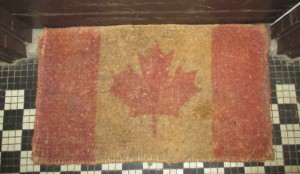
I reflect on the CBC now, in May 2014, after a lamentable period in which the public broadcaster of Canada has been battered with several rounds of cuts to its budget mandated in part by the right-wing government of Prime Minister Stephen Harper, most recently with cuts that will lead to the loss of much programming and 657 jobs across the service. The real financial problems seem to lie with CBC TV, which finds it increasingly hard to compete in the commercial TV universe. Unfortunately, the radio side is taking it on the chin, too. I’m feeling the pain of my pals in Canada, for according to CBC’s reporting on its own fate the day the budget axe fell, “Radio will also reduce some of its live music performances and some local musical performance shows will be cancelled or consolidated into regional shows.” Already, I’ve learned that Bandwith—a weekly show from Ottawa that’s been airing at 5pm on Saturdays for years, helping to launch careers of a number of popular acts, like Elliott BROOD, Snailhouse, and Lindi Ortega—will go dark after the summer. I know that many of my friends in Canada, with their next federal election coming in 2015, hope to stop these regrettable cuts and renew their public broadcaster, though it’s unclear if the unseating of Harper’s government would in and of itself reverse the cuts. It’s a pity that politicians and governments in many countries often fail to recognize the economic heft and halo provided by arts and culture, and the salutary effect they have for the quality of city and town life. The cuts to CBC will harm culture and the economy, a double whammy that I hope to see reversed in the future. I’ll be interested to see if, and to what extent, the CBC becomes an issue in Canada’s next federal election, coming in fall 2015.
Last, by celebrating Canada and my affinity for it, I don’t mean to create a false community among Canadian authors and musicians based on nationality alone, or make too much of mere citizenship. In Cat’s Cradle, Kurt Vonnegut coined the term “granfalloon” to mock the foolish cultivation of tenuous associations like these. I know it’s not as if all these musicians know one another, or are part of a single creative scene. In some sense, I, and fans like me, are the vector that connects the bands to one another, helping their musics cohere in to a scene of sorts. I know of course there are many talented writers and musical acts that are not Canadian, and my musical collection, even loaded with Canadian artists as its become in recent years, still attests to my broader enjoyment of music from all over the world. I am also under no illusion that Canada is an ideal society, or that its politics aren’t tainted by some of the same anti-democratic impulses as are politics in the U.S. Despite my affection for many Canadians, and respect for Canada, I’m aware that its national story includes many historical injustices and contemporary flaws. One might say that while the original sin of the U.S. is slavery—and our failure to build a more just society after the agony of the Civil War, tragically letting the Jim Crow era take hold in the final decades of the nineteenth century, which persisted through more than half of the twentieth—Canada’s original sin is its failure to recognize the full humanity of native people, with this attitude also persisting well in to the twentieth century, with the odious residential schools where many First Nations children suffered neglect, mistreatment, abuse, even death. Canada is engaged in a formal truth and reconciliation process, but there is a long way to go before healing is achieved for many adult survivors of those schools, and their descendants, especially when one then listens to news accounts of at least 2000 missing and murdered Aboriginal women in Canada since the 1980s.
And yet, despite these and other flaws, and even what I consider to be misrule under the government of Stephen Harper, Canada has always struck me as having insanities and obsessions that are a step or two less insane and obsessive than those of the country in which I was born and grew up. There is the humanism of the CBC that I heard when I first listened to the radio service, which it still exhibits. For me, Canada still offers a respite to the jagged and dangerous vibe coursing through U.S. politics and our media. For that, I appreciate Canada and her so often hospitable and warm people, even while not idealizing this splendid country or its inhabitants, where I’m proud to say I know many creative artists whose work I admire, and many, many friends I’m glad to say I’ve made.
*In naming this blog, you’ll note I didn’t call it The Honourary Canadian; I make no claim to being the only person from outside Canada with this sort of affinity for the country. In fact, I’ve noticed that Canada has many fans around the world, in the U.S., and in other countries, another point to Canada’s credit. Meantime, it’s become harder for me to imagine someone from outside the U.S. calling themselves an honorary American.
**(I’ll add in an updating to this essay written on July 2, 2017, I feel this even more acutely now that Donald Trump has somehow become US president.)
***It’s a too-little known geographical curiosity that Windsor, Ontario, Canada, is south of Detroit, Michigan, USA. Testament to this is the music blog of Radio 3 friend Russ Gordon in Michigan who calls his music blog N2D/S2W, aka Go North to Detroit, South to Windsor.

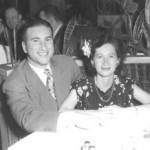
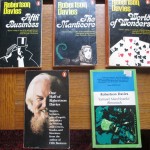
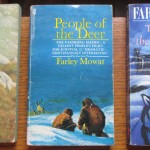
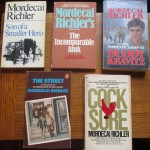
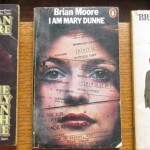
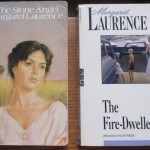
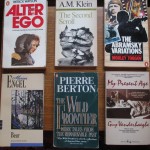
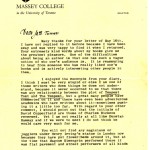
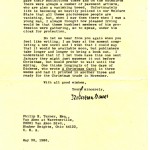
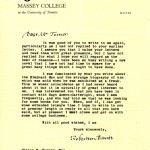
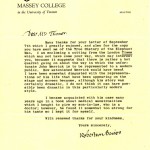
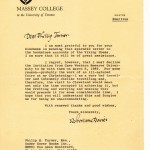
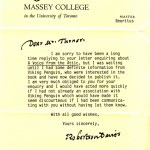
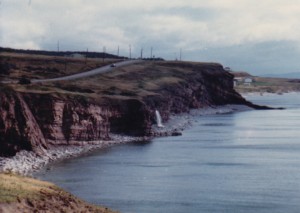
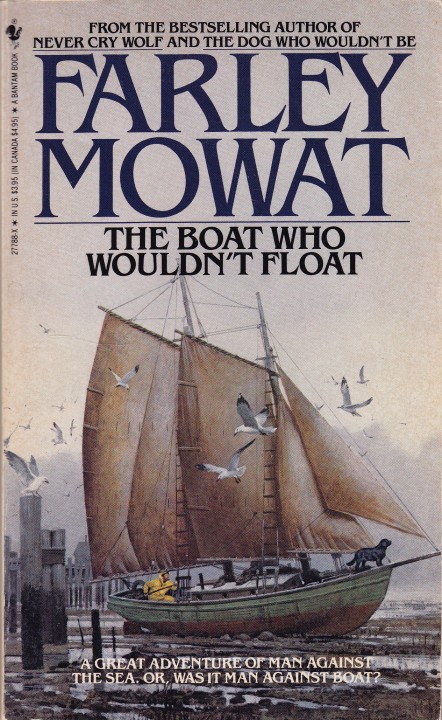
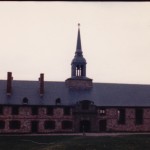
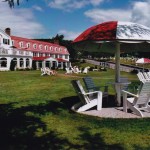
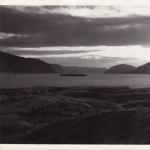
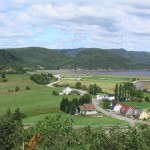
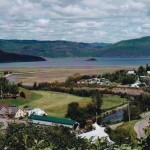
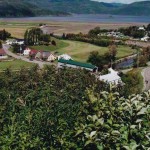
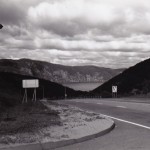
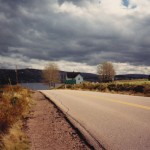
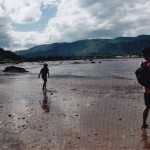
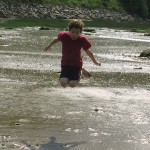
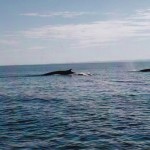
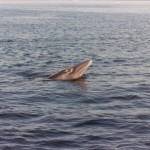
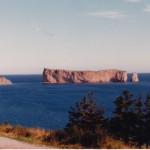
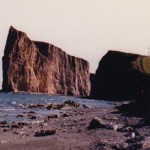
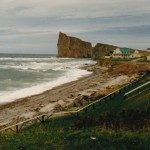
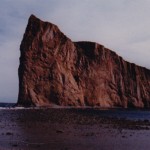
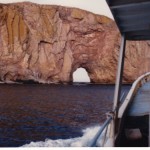
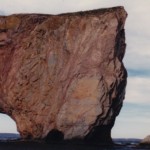
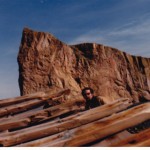
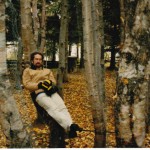
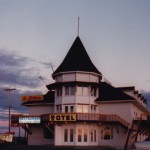
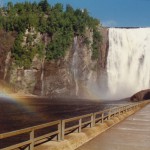
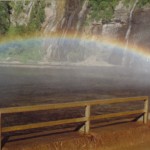
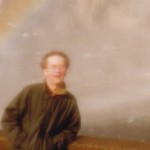
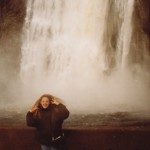
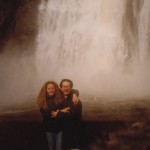
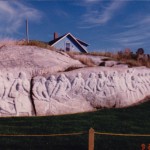
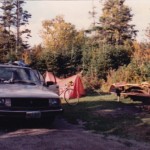
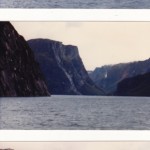
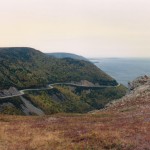
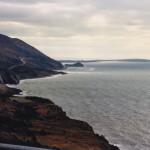
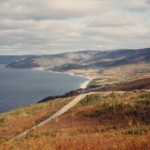
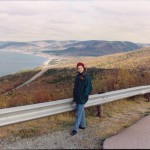
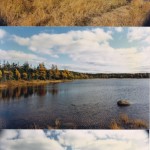
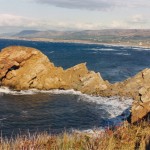
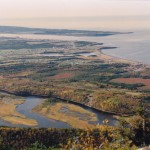
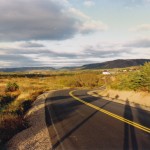
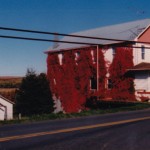
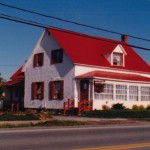
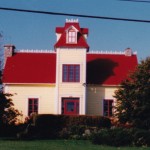
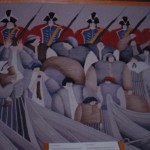
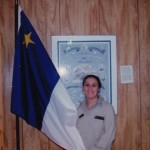
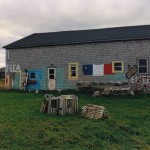
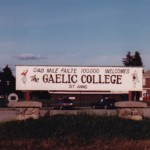
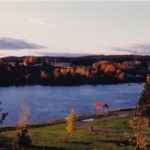
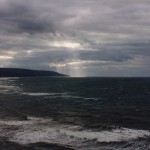
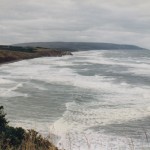
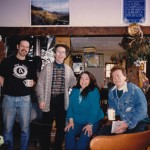
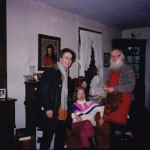
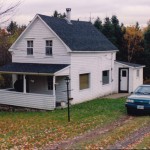
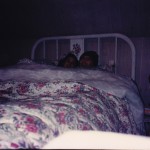
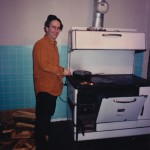
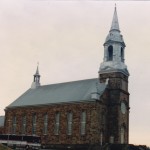
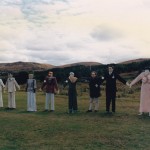
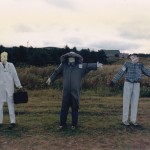
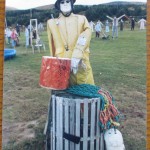
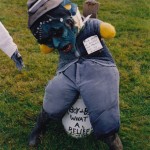
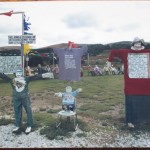
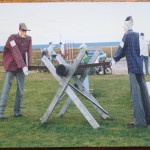
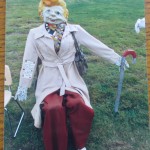
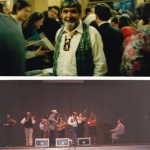
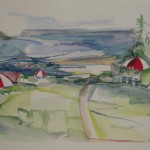
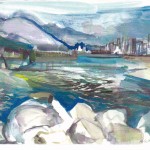
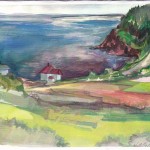
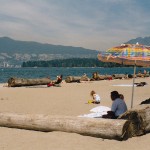
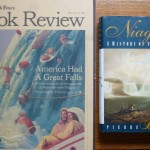
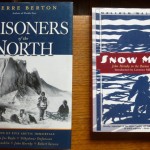
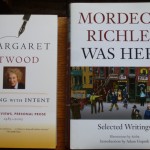
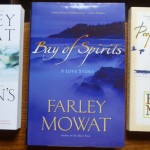
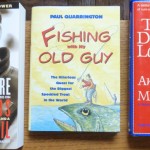
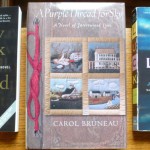
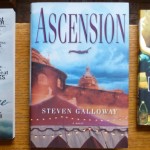
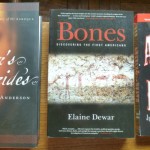
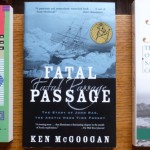
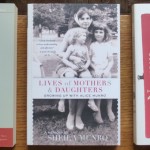
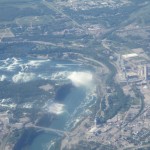
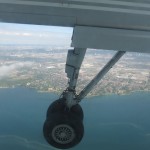
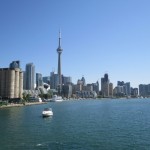
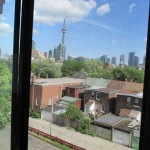
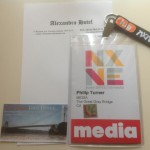
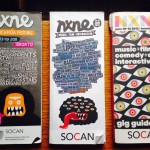
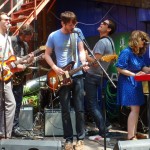
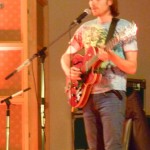
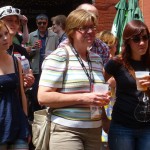
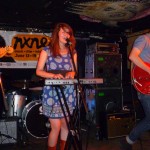
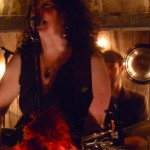
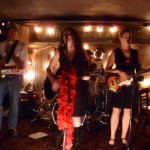
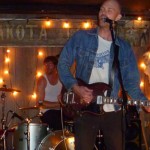
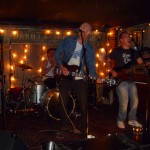
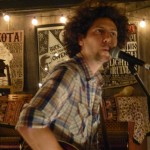
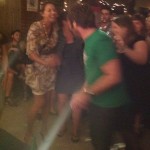
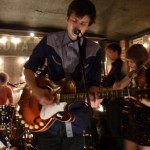
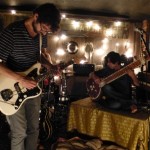
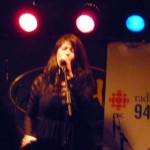
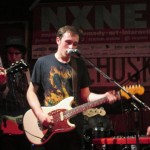
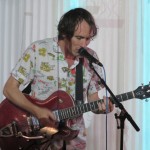
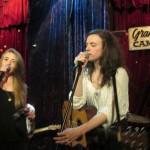
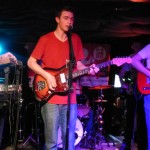
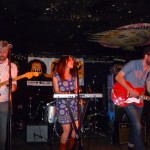
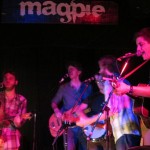
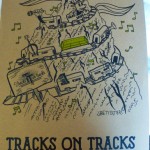
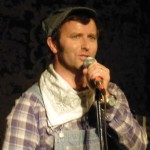
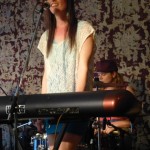
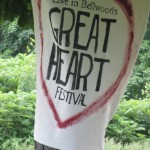
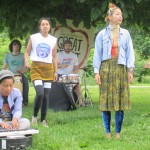
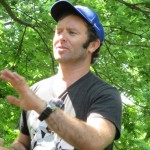
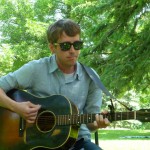
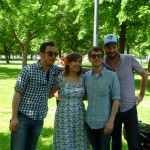
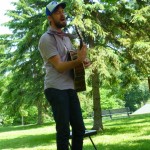
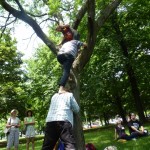
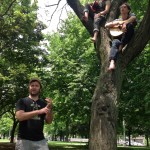
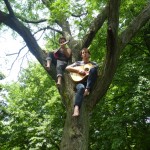
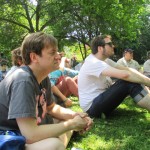
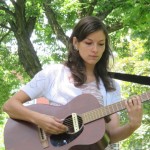
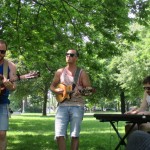
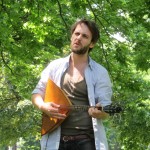
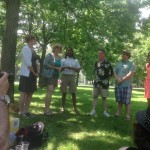
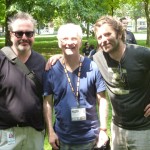
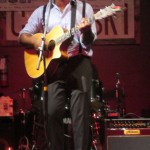
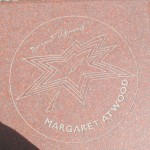
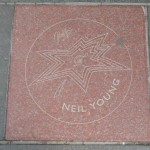
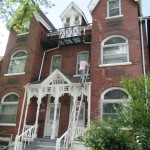
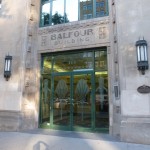
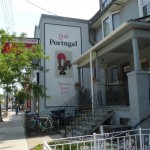
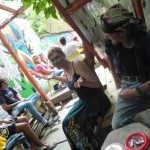
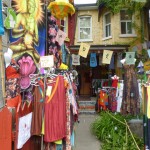
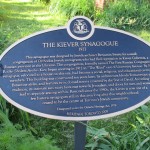
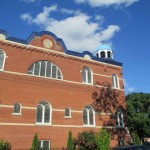
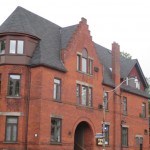
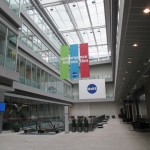
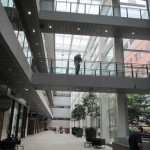
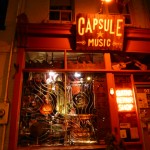
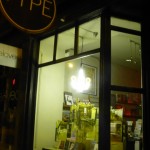
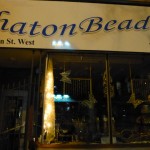
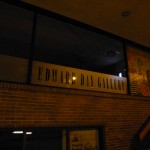
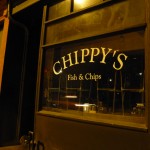
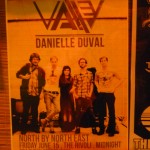
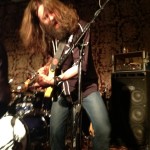
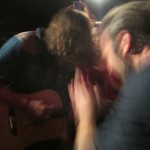
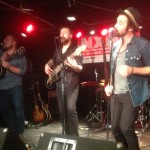
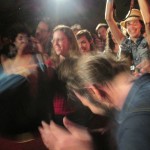
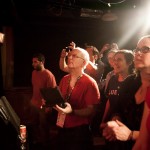
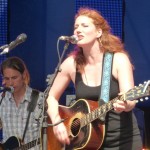
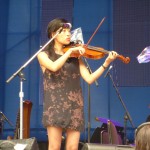
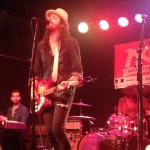
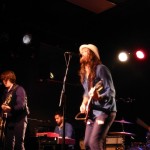
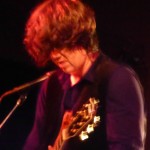
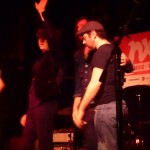
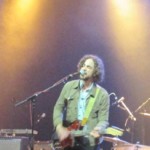
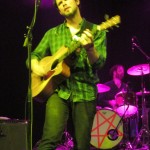
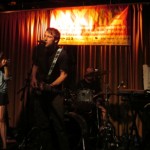
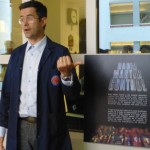
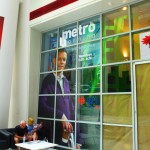
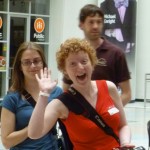
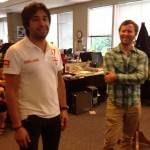
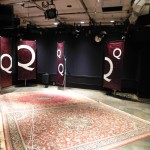
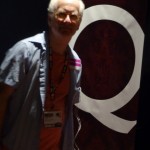
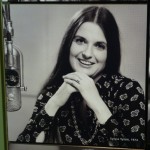
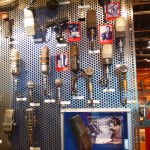
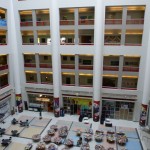
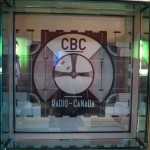

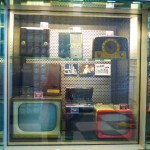
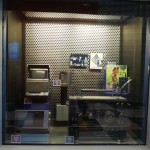
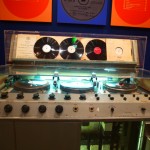
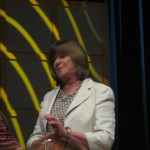
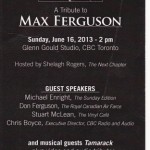
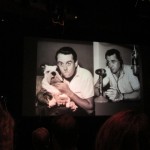
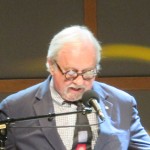
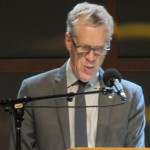
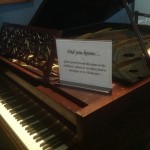
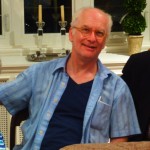
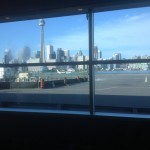
Trackbacks & Pingbacks
[…] Why I Write this Blog […]
Leave a Reply
Want to join the discussion?Feel free to contribute!